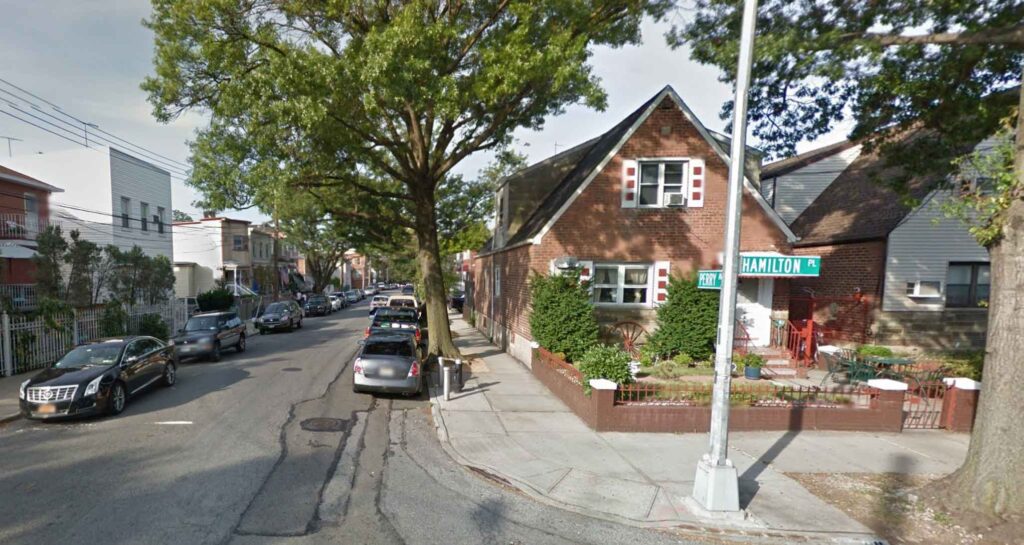Many years ago, I noticed what appeared to be an authentic vintage wagon wheel serving as décor inside a front yard garden at the corner of Perry Avenue and Hamilton Place. I speculated about the history of that wheel, how old it might be, the type of vehicle it once belonged to, and how it came to be on that property. My imagination came up with some fun theories, such as it being crafted by the wheelwright shop that had operated on Grand Avenue where Polish-Slavic Credit Union stands today. Over time, the wagon wheel began to fall apart, lost its spokes, and it was removed some time in the past two years. Bummer.
The intersection where it was is itself historic. Not because its crossroads are named after 1812 naval war hero Oliver Hazard Perry and Alexander Hamilton, our financial Founding Father, but rather because a structure known locally as “The Barracks” once stood there. I recently discovered a 1901 article from the Brooklyn Daily Times that detailed its history while reporting on its demise.
The double structure was built around 1850 by a man named Webster. After living in the home for several years, he died from injuries he received in a freak accident where he was run over by his own wagon. (Hmmm…could that garden wheel have been the one that did Webster in?) The house then became a haven for many Blacks fleeing the 1863 Manhattan Civil War draft riots.
In summary, poor Irish immigrant laborers, who could not afford the $300 fee to avoid serving in the Union Army, protested the draft. This escalated into mob violence directed at Blacks, who were hung from lampposts, had their homes plundered, and their orphanage burned. After the dust settled, many of the refugees continued to stay in Maspeth. The building, by then known as “The Barracks,” was reported to be one of the best paying properties in the area, but maintenance of the property was lacking.
After Newtown joined the City of New York in 1898, the City vacated the dilapidated property for “sanitary reasons.”
In November 1900, some local boys were expected to make an Election Night bonfire, a tradition called “A Hot Time in the Old Town.” But what they really planned to do was burn the building down. Word got out, so they were not able to follow through with their plan. The following winter the City finally razed the building, with the Brooklyn Daily Times newspaper lamenting the loss of “another of Maspeth’s landmarks.”
It’s sad that no trace of the building remains. If not for the newspaper archives, we might not have known that it ever existed.
That Maspeth served as a safe harbor for those fleeing the horror of violence across the river during one of the worst chapters in NYC history is a proud part of our own local history.




